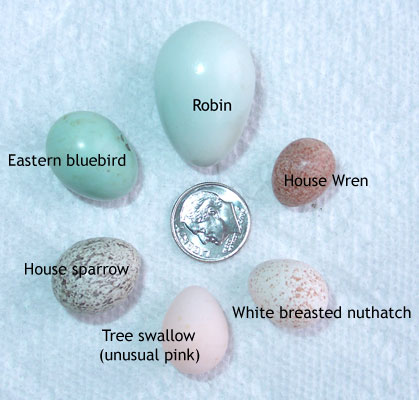Along the driveway, there were 2 small, broken, very blue eggs.
Why? Why along the driveway?
Was the robbing bird using the hard surface to help break the eggs?
Why not just use their pointy beak?
Whose eggs were these?
They seemed smaller than a robins?
Which other birds lay blue eggs with no markings or spots and are smooth?
Using Peterson's Field Guide: Eastern Bird's Nest, this is what I found:
From small to large:
14 x 11 mm - blue-gray gnatcatcher - pale - bluish, bluish white
18 x 13 mm - house finch - pale bluish green
20 x 16 mm - bluebird - pale blue, bluish white
22 x 16 mm - veery - pale blue, similar to robins
22 x 16 mm - hermit thrush - very pale blue
23 x 17 mm - gray catbird - deep greenish blue
25 x 18 mm - wood thrush - pale blue
28 x 20 mm - robin - robin egg's blue
29 x 21 mm - common starling - pale bluish or greenish white

Here is an online site for egg and nest identification:
http://thebirdersreport.com/egg-and-nest-identification
In measuring the egg, it is around 28 mm and with it's distinct blue, it's most likely a robin's egg.










































